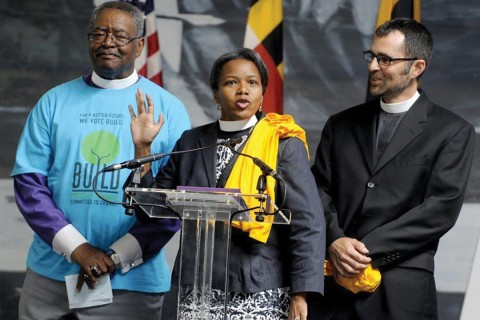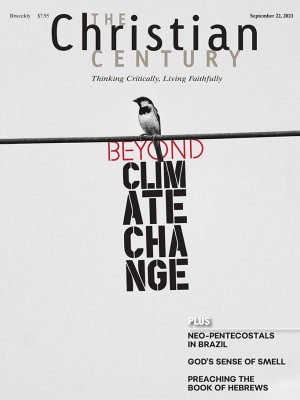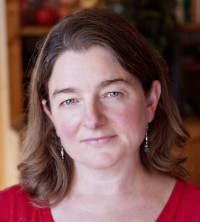Leveraging the power of relational organizing in Baltimore
“The historical truth is that no single person—no matter how gifted—has led complex social change on her own.”

Glenna Huber and Andrew Connors recently served as cochairs of Baltimoreans United in Leadership Development. BUILD is a multiracial, interfaith organization that works to improve jobs, schools, and community relations. The organizing work Huber and Connors led continues to have a transformative impact in Baltimore neighborhoods. Huber is rector of the Episcopal Church of the Epiphany in Washington, DC, and Connors is senior pastor of Brown Memorial Park Avenue Presbyterian Church in Baltimore.
How did BUILD come into existence?
Huber: In the early 1970s, Black ministerial leaders in Baltimore grew concerned that the movements of the 1960s had developed too much of a focus on charismatic personalities, and that made movements less energetic and less democratic. Those leaders invited the Industrial Areas Foundation—the oldest and largest power organizing organization in the US—into Baltimore to assist in identifying and training local leaders for a more relational form of organizing.
Read our latest issue or browse back issues.
What have been some of your successes?
Connors: Using the community power that BUILD helped develop, Baltimore passed the first living wage ordinance in the country, essentially coining the phrase. We created the largest after-school program in the city. We’ve renovated over 800 homes in Baltimore, rebuilding entire neighborhoods. We were instrumental in raising $1 billion to rebuild a quarter of Baltimore’s public schools. We created Turnaround Tuesday, a jobs movement that has placed over 1,000 Baltimoreans—65 percent of whom have criminal records—in living-wage work, with one of the highest retention rates in the country.
Huber: One of the hallmarks of our leadership was the creation of community health worker jobs as a response to the Freddie Gray uprising. During the uprising, most of the press attention focused on the nightly clashes with police at the intersection of North and Pennsylvania Avenues. But just a few blocks away at St. Peter Claver Catholic Church, members of our organization met person-to-person with community members struggling to find food, get lifesaving prescriptions filled (after the CVS was burned to the ground), and protect their children. As we organized to meet basic needs, we also listened to residents share their deepest stresses, needs, and hopes.
Connors: As relationships among this team deepened, we made decisions to pursue a longer-term strategy focused on living-wage jobs for residents of our most disinvested neighborhoods. Johns Hopkins, the largest private employer in Maryland, made a commitment to work with us to create hundreds of new jobs. We pressed them for specifics. They pressed us for our commitment to bring our power to bear on big players that would oppose us. One year after we went into action, 375 community health worker jobs were newly created, targeting Freddie Gray’s neighborhood and others like it. Today those community health workers are on the front lines for disrupting the pandemic. Despite the limited publicity, I believe this effort is still the most concrete social justice advance that emerged from the Baltimore uprising. Leaders invested in each other and in the discipline of listening and acting to create systemic change.
What have you learned about community organizing from this work?
Huber: I have had to keep relearning that all organizing is reorganizing. At one point, we recognized that we had fallen into the habit of meeting, pointing out issues, but not really implementing the steps necessary to achieve change. As happens frequently in movements, we were good at bringing attention to issues without creating change. We needed to stop, refocus, and reorganize in order to take the next steps. Our hope in telling these stories is to offer readers some of the tools that we found useful in moving from naming a problem to actually addressing a problem for sustainable change.
What are those tools?
Huber: One of the most fundamental is relationship building. This creates a culture where all stakeholders have the opportunity to utilize their power in a way that allows for voices to be heard that aren’t typically found around the decision-making tables.
Organizing allows us to leverage our relationships to address the systemic political systems that demean God’s people. These relationships were once formed in church basements, at coffee shops, at PTA meetings, and over kitchen tables. The methods may have shifted, but relationships will continue to sustain us as the political landscape also shifts.
BUILD has given me an inside view of the ways relational organizing can create sustained systemic change. This was particularly important as the pandemic dragged on and the country confronted generations of inequity in health care, policing, and affordable housing. The long-term work of addressing decades of injustice takes teams of committed people who trust each other enough to wrestle with the inevitable tensions that present themselves when working with a truly diverse group of God’s people.
Connors: Glenna is right: we have to start with relationships. Many of the clergy we work with haven’t done the work to build relationships, and now they find themselves in this moment when we need leadership, and they don’t yet have the relationships to provide that. Power flows through relationships.
For example, if I’m upset because the city isn’t dealing with trash in my neighborhood, as an individual, I have very little power to change that. But if I pull together five other neighbors who are frustrated with the same problem, and each of us pulls together five more neighbors, suddenly we have power that we can wield together. The trouble is that most clergy and lay leaders within congregations don’t spend their time on the process of listening and building relationships around shared interests. Our calendars are full of other things.
How do you think community organizing changes after the pandemic?
Huber: The pandemic made clear what we’ve previously known but rarely embodied: American cultural individualism is not sustainable. For people of faith, this individualism is not supported by scripture. Ever since the beginning, the Divine is recorded as creating with an eye toward relationships, and humans create in relationship with each other as well as their Creator.
Connors: This myth of individualism has even infected the way we talk about the social movements of the past. We love to tell stories of unilateral decisions by prophets “speaking truth to power.” We imagine Rosa Parks refusing to get out of her seat as a single, solitary event. We tell stories of Dr. Martin Luther King Jr. looking to the heavens for a dramatic word. We imagine Harriet Tubman driving the underground railroad all by herself. These stories are not so much untrue as incomplete. They neglect the way that individuals were shaped by the institutions of their time and how that shaping gave rise to their courage. They ignore the teams of people whose collective efforts produced individual actions and leveraged those actions for larger change. The historical truth is that no single person—no matter how gifted—led complex social change on her own.
What is most needed now?
Huber: In 2020 we were reminded that we organize around the issues, not the person who happens to be in any elected office. The election season, coupled with pandemic turmoil and racial unrest, prompted us to remember that relational organizing takes time and is messy.
The story of recent activism has been the mobilization of the many. The last two decades have given rise to a number of movements for change, from Occupy to the Women’s March to the Me Too and Black Lives Matter movements. There is no shortage of activism—if by activism we mean mass protest and raising of the collective consciousness toward change. What is missing is the actual implementation of policies, the actual changing of priorities in the concrete forms of money, budgets, and institutional structures that power uses to shape us for good and for ill.
Connors: This is essential for churches to recognize. Churches intent on participating in this kind of change must reject any activist posture that measures success by the energy or effort of its spokespersons, rather than by the outcomes that we design and pursue together. To refuse to do so risks centering the “heroic”—read individualistic—efforts of those who take stands and preach prophetic words instead of the actual transformation that God calls us to enact together. It reinforces the exceptional individualism myth that must be exposed in order for real change to occur.
In order to make those kinds of investments, the church will need leaders who spend more time in the nonglamorous relationship-building work that is at the root of all complex social change. In our own experience, this work takes the form of leaders who fill their time with person- to-person meetings where assumptions are suspended—to the best of our ability—and stories are shared that reveal the depths of our humanity and the particularities of our private motivations and interests. This is what provides the possibility for future, shared actions.
A version of this article appears in the print edition under the title “Relational leadership.”






